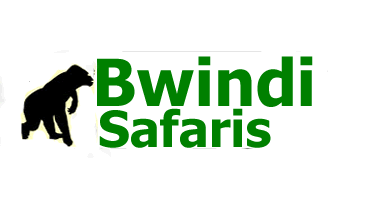24 Oct Explore Africa’s Tourist Wildlife Places 2020
These are home to an incredible variety of bird and animal species, including the ‘Big Five.’ Nothing beats the views of lions chasing their prey, personal encounters with mountain gorillas and witnessing wildebeest migrations. We explore the top African wildlife parks, which will most certainly become the highlight of your journey!
Bwindi Impenetrable National Park
This world heritage-listed national park in Uganda is one of the region’s most famous safari tourism parks thanks to its community of mountain gorillas calling the park home. Indeed, set over a steep mountain rain forest, the park counts 360 gorillas to this day. Without a doubt, the ‘impenetrable forest,’ as it’s often referred to, is Uganda’s most impressive tourist destination for gorilla safaris and one of the continent’s oldest habitats. Also, there is quite an impressive diversity in terms of flora and fauna in comparison to other rain forests. The park is home to around 120 mammals and almost 360 bird species. Lucky travelers might even be able to spot some birds.
Maasai Mara National Reserve
Maasai Mara (Masai Mara) is situated in south-west Kenya and is one of Africa’s Greatest Wildlife Reserves. Together with the Serengeti National Park in Tanzania it forms Africa’s most diverse, incredible and most spectacular eco – systems and possibly the world’s top safari big game viewing eco – system.
Wildebeest migration: Make sure you have your safari book planned out that includes the Maasai Mara. I am sure you have heard the wildebeest migration is nothing short of amazing. It is one of the things you have to add to your bucket list. Best time to be in Kenya for it is JULY – OCTOBER. It hosts over 95 species of mammals and over 570 recorded species of birds. This is the World Cup of Wildlife, and together with the Serengeti National Park there is no better place to witness the BEST WILDLIFE VIEWING IN THE WORLD!
Serengeti national park
Serengeti National Park, in northern Tanzania, is known for its massive annual migration of wildebeest and zebra. Seeking new pasture, the herds move north from their breeding grounds in the grassy southern plains. Many cross the marshy western corridor’s crocodile-infested Grumeti River. Others veer northeast to the Lobo Hills, home to black eagles. Black rhinos inhabit the granite outcrops of the Moru Kopjes.
The Serengeti ecosystem is one of the oldest on earth. The essential features of climate, vegetation and fauna have barely changed in the past million years. Early man himself made an appearance in Olduvai Gorge about two million years ago. Some patterns of life, death, adaptation and migration are as old as the hills themselves.
It is the migration for which Serengeti is perhaps most famous. Over a million wildebeest and about 200,000 zebras flow south from the northern hills to the southern plains for the short rains every October and November, and then swirl west and north after the long rains in April, May and June. So strong is the ancient instinct to move that no drought, gorge or crocodile infested river can hold them back.
Volcanoes National Park is a national park in northwestern Rwanda. It covers 160 km² of rainforest and encompasses five of the eight volcanoes in the Virunga Mountains, namely Karisimbi, Bisoke, Muhabura, Gahinga and Sabyinyo.
Volcanoes National Park in Rwanda is best known for mountain gorilla trekking but the park is also rich with many other exotic activities for one to take on. This park is part of the Virunga volcanoes which are shared between Uganda, Rwanda, and DR Congo. This park is an evergreen bamboo forest with grassland areas, swamp, and heath in other areas.
The mountain gorillas are the prime attraction in volcanoes national park with gorilla trekking happening all year round. Because of the high altitude it is generally cold, especially early morning and the evenings, you are advised to carry a light sweater for these times. The park is located only 2 hours from Kigali in the north of Rwanda.
Kruger National Park, in northeastern South Africa, is one of Africa’s largest game reserves. Its high density of wild animals includes the Big 5: lions, leopards, rhinos, elephants and buffalos. Hundreds of other mammals make their home here, as do diverse bird species such as vultures, eagles and storks. Mountains, bush plains and tropical forests are all part of the landscape.
The largest game reserve in South Africa, the Kruger National Park is larger than Israel. Nearly 2 million hectares of land that stretch for 352 kilometres (20 000 square kilometres) from north to south along the Mozambique border, is given over to an almost indescribable wildlife experience. Certainly, it ranks with the best in Africa and is the flagship of the country’s national parks – rated as the ultimate safari experience.
This is the land of baobabs, fever trees, knob thorns, marula and mopane trees underneath which lurk the Big Five, the Little Five (buffalo weaver, elephant shrew, leopard tortoise, ant lion and rhino beetle), the birding Big Six (ground hornbill, kori bustard, lappet-faced vulture, martial eagle, pel’s fishing owl and saddle-bill stork) and more species of mammals than any other African Game Reserve.



No Comments